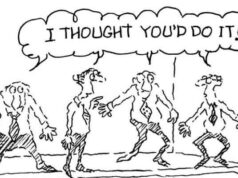From a heatwave in the Arctic region to devastating floods in many countries, the threat of climate change is now stark. Some new urgency can be seen in an official statement released by G20 environment ministers last weekend. It said that all 20 countries would try to limit global warming to 1.5° Celsius above temperatures before the Industrial Revolution; this is a more aggressive target than that of the Paris agreement in 2015, when almost all countries in the world agreed to keep it below 2° Celsius.
The new G20 agreement comes just before the United Nations Climate Change Conference in Glasgow this November. There remain many stumbling blocks before we get a credible global climate deal that will have all large countries reduce their net carbon emissions to zero by 2050, while ensuring that the poor are not denied opportunities for economic progress. The sharp drop in economic activity in 2020 caused by the pandemic led to a parallel decrease in carbon dioxide emissions and a big increase in poverty, globally. A global action plan to limit climate change can’t be built on degrowth.
Keeping climate change in check is perhaps the biggest example of a global public good, in the sense that its benefits are non-rival and non-excludable. Most would agree that governments need to play a big role in delivering this public good. However, the private sector will also be an important player to both drive innovation as well as invest in green production systems. The frameworks that drive economic policy discourse will also have to adapt in the years ahead. Let’s look at four of these shifts.
First, debates on economic performance are usually focused closely on flow variables such as gross domestic product (GDP). Shifting to a green economy will mean that changes in stock will matter too. A lot of economic activity converts stocks into flows. Some economists have already proposed new frameworks for this. One example is to look at changes in natural capital in tandem with those in physical and human capital. The latter two generally increase with economic growth; the former shrinks. Green national accounts would have to take that depletion into account.
Second, any such green shift will be disruptive. At the very least, it will involve large financial costs. Most of the carbon pumped into the atmosphere has come from rich countries. Countries like India still have low carbon emissions per capita, as well as low carbon intensity for every unit of GDP. It is unfair to expect the global poor to share the burden of mitigation equally with the global rich, especially if it means sacrificing income growth. This has been a sore point in most climate change negotiations.
However, there’s another aspect of climate justice that is just as important: between current and future generations. Some argue that today’s generation should only minimally pass on costs to future generations for emissions that the latter were not responsible for. Others say that generations to come will be richer than the current one and better able to afford the bill for a green shift.
A lot depends on what economists call the discount rate, on how costs are shared between generations. There are two tricky questions here, and the answers to both are as philosophical as they are technical. Should the discount rate in climate change economic models be low or high? A low rate, in effect, will place a higher burden on the current generation. And should the discount rate be chosen subjectively or taken from an objective number such as the long-term interest rate used to value investment projects? This is an unsettled issue, and much of the trajectory of climate change mitigation pivots around this tangle.
Third, there are two contrasting ways in which incentives can be used to make the shift to a green economy as smooth as possible. One option is to impose hard pollution quotas decided by a public agency. This could slip into a new version of the licence raj. The other is to use policy levers to change relative prices, either by imposing high carbon taxes or by subsidizing alternatives, or some combination of the two.
The use of subsidies leads us to an old question about whether governments are good at picking technologies. For example, big subsidies for solar power or one variant of electric vehicles might make it harder for other green options to attract investment. A carbon tax is simpler because it punishes polluters, but makes no distinction between green alternatives available right now and ones that can potentially emerge later.
Fourth, most heavy lifting in terms of climate change mitigation policy is being done by governments, and naturally so, given the negative externalities involved. However, individual cities or companies can also draw up their own strategies to reach net carbon neutrality by 2050, or even earlier. When former US President Donald Trump pulled the US out of the Paris agreement, individual states, companies and universities responded with voluntary pledges to cut their carbon footprints. Local voluntary cooperation to overcome the tragedy of the commons that Elinor Ostrom studied may not work on its own for a global challenge such as climate change, but it is equally true that national action plans should be complemented with private sector commitments. That could well be an emerging issue in corporate governance in the years ahead.
This article was originally published in Livemint on 27 July 2021.
Read more: Science and State: A Nightmare for Forest Dwellers
Post Disclaimer
The opinions expressed in this essay are those of the authors. They do not purport to reflect the opinions or views of CCS.






